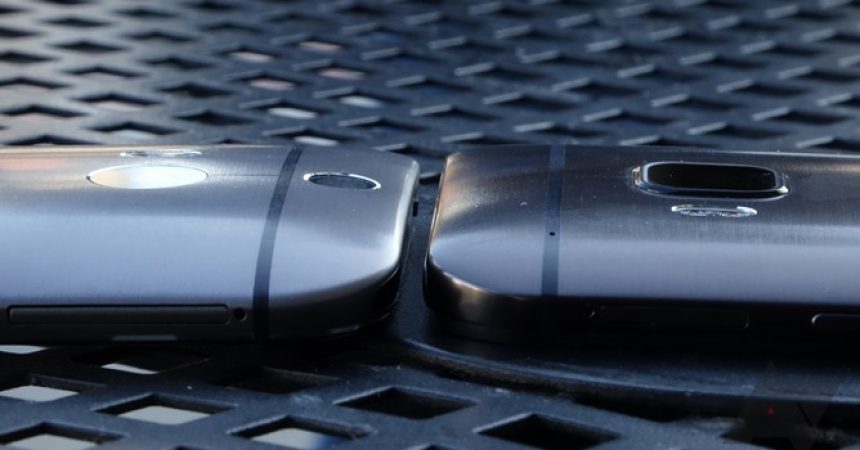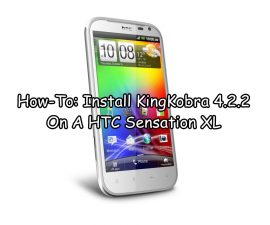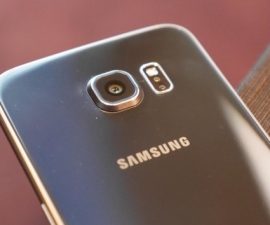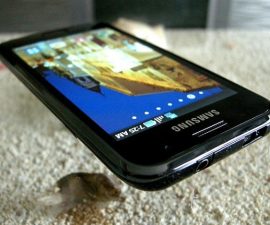HTC One M9 Review
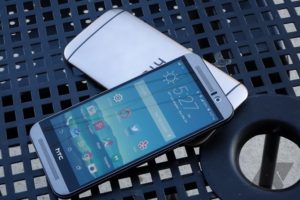 HTC is among the earliest companies to use the Android platform when it launched the Dream in 2009. This allowed HTC to be recognized as one of the leading companies in the smartphone market. However, its attempt at rebranding through the launch of the One series began its slow – but continuous – downfall. The designs such as that of the One X and the One M7 are beautiful and generally received positive feedback. In 2014, HTC released the M8, but it fell short of the expectations of people despite its remarkable Boomsound speakers, 1080p LCD, and Snapdragon 801 processor.
HTC is among the earliest companies to use the Android platform when it launched the Dream in 2009. This allowed HTC to be recognized as one of the leading companies in the smartphone market. However, its attempt at rebranding through the launch of the One series began its slow – but continuous – downfall. The designs such as that of the One X and the One M7 are beautiful and generally received positive feedback. In 2014, HTC released the M8, but it fell short of the expectations of people despite its remarkable Boomsound speakers, 1080p LCD, and Snapdragon 801 processor.
The One M9 led people to further question whether HTC is really running out of innovations for its smartphones. The bigger battery, 20 MP camera, Snapdragon 810 processor did nothing to make it excel against competitors.
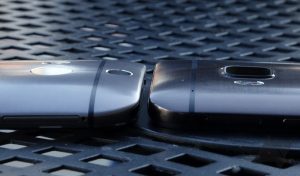
- Design
The One M9 is so similar to its predecessor, the One M8. There are some positive changes, but most are leaning towards the negative. The good changes include:
- The plastic speaker grilles is now built into the metal frame.
- The HTC logo black bar has a reduced height.
- A slightly positive change is that external screws are added to address complaints about the M8 being “un-disassembleable” and screwless. However, the insides such as the battery and display are still glued in, to the point that it’s still impossible to disassemble everything.
While the less positive ones are:
- The chamfered edge was changed for a stepped break in the metal frame. It is cut at a perpendicular angle and was allegedly done to make the phone more “grippable” due to complaints of the M8 being slippery to hold. But it didn’t seem to serve its purpose well; it’s still slippery.
- The front camera of the M9 has a metallic ring that looks awkward and out of place.
- The buttons all transferred (and clustered) to the right side, making it difficult to use.
- The camera module is now square with a much bigger size and sticks out from the back frame.

What was retained:
- The MicroUSB is here to stay; so is the 3.5 mm port arrangement that was present in the M8.
- The GPS/IR plastic antenna window, though more angular, is still at the M9
The M9, like the M8 (you’ll see that comparison a lot), feels solid because of the aluminum chassis covering it. It still looks and feels like a premium phone. But then because of the numerous “less positive” changes done with the M9, it’s safe to say that it’s less nicer than its predecessor.
2. Display
The M9 still uses a 1080p LCD, but it seems to have better tuning than the saturated look of the M9. The similarities still continue in terms of:
- The maximum brightness
- The viewing angles
- The outdoor visibility
- The 1080p LCD, in which competitors like Samsung and Apple easily outdo HTC. While the two have their own panel designs, HTC still depends on its suppliers, making it highly dependent and volatile. Samsung’s AMOLED panels dominate all smartphone displays at present, while the M9 can only be called decent, at the very best.
Some changes:
- Lower minimum brightness (but only by a few nits)
- Battery life
The One M9’s battery is terribly disappointing. The data sleeping – supposedly to save battery – or even Wi-Fi loitering does nothing to prolong the phone’s battery life. Sense also does not give the screen-on time at the power usage UI, so you will not know how much screen time you have. The M9’s battery is even worse than the M8. HTC wasted the one area where it could possibly excel above Samsung or LG or Motorola.
- Storage and wireless
HTC’s 32gb storage in its M7 and M8 was an advantage over Samsung’s Galaxy S4 and S5, which only had 16gb storage. However, with the release of the 32gb Galaxy S6, HTC now has less advantage, except for the still-present microSD card slot. The Sense 7, however, highly depends on that 32gb storage – and as the One M9 ships with only 20gb available, you would only have 4gb left to work with if HTC shipped a 16gb M9. The One M9 certainly suffers from a bloat problem.
The WiFi and mobile data of One M9 works well. The Bluetooth, on the other hand, sometimes has issues with the syncing of the G Watch R device and the M9: something that doesn’t occur in other phone models.
5. Call quality, audio, and speakers
The M9’s call quality is similar to a landline phone. It has an HD voice feature, which provides a better call quality than a regular phone. Meanwhile, its Boomsound front-facing speakers are now tuned by Dolby but it has minimal difference from the M8. Both have the similar hardware, so the quality is just the same. Use of the headphone audio, which is from Qualcomm’s Snapdragon chipset, is also remarkable.
6. Camera
The HTC One M9 did away with the 4mp Ultrapixel sensor and now uses a 20mp Toshiba sensor that is basically an odd choice for a smartphone. The Sony IMX sensor – used in almost every smartphone – would have been a much better choice. It is a far cry from the cameras of other flagship smartphones in 2015. Here are some negative points about the M9 camera:
- Slow launch time – from one to four seconds
- The focus in low light is not right. The focus should always be directed, and you have to wait for a long period to wait for the camera to focus, and when it finally does, you have to wait again for it to capture the image.
- Processing noise and aggressive processing is always present, be it in low light or day light.
- Image quality even in day light does not have impressive details or color reproduction.
- HDR performance is useless on the M9
- No new camera features
- No optical image stabilization
But then, the One M9’s camera is still significantly better than the One M8. Here’s why:
- It has a finer detail, because the image produced by the M8 has coarse detail, at the very best.
- The HDR performance of the M9 has actually improved; the HDR of the M8 is the worst.
7. Performance
The performance of the One M9 – and its processor Snapdragon 810 – has been a controversial topic. Here are a few points:
– Using the Geekbench 3 benchmark, the Snapdragon 810 of the One M9 gets unbearably hot at 118°F or 48°C. This is the highest recorded temperature for a smartphone; the second highest also runs on Snapdragon 810 processor and heats at 110°F. This happens when the GPS is navigating, or when the cellular radio is on and the phone is active.
– The Snapdragon 810 throttles. While its A57 quad-core cluster is rated at 2.0 Ghz, the M9 does not perform at over 1.6 GHz.
– The M9 is a bit slower than the M8 in some activities such as switching between applications.
To balance things, a remarkable thing about the M9 is that it doesn’t lag.
The use of the Snapdragon 810 seem to be more for marketing than actually attempting to create a quicker phone. Buyers tend to look at the phone’s specifications, and seeing this “upgrade” will make them think that the M9 is faster than the M8. Also, there is no other alternative since, for instance, Intel is not yet providing a high-end LTE SoC. Hence, the choice of HTC for its new flagship phone is either to ship with an old (outdated for customers, but proven) chip, or with a new (thumbs up for the “techies”, but otherwise compromised) chip.
8. Sense 7
Sense 7 – HTC’s seventh version of its proprietary skin – is not so different from its predecessor, the Sense 6. The only differences are:
– The notification bar has a (slightly) smaller vertical height.
– A new clock widget.
– The Sense Home.
– An interface for switching pages that looks (kind of) like Holo
– Multitasking interface changed to the old Sense style of grid-layout.
– Restaurant suggestions on BlinkFeed
– New button added to clear recently used apps.
– Theme engine that gives you the freedom to use your own theme or a third-party theme. The liberty to choose and/or create the icon pack, color palette, sounds, and font is a joy.
– Navigation buttons can now be added and can be organized according to your liking
– New app called Cloudex that allows you to download your cloud photos in your phone’s Gallery
– Three new options in the camera store
To conclude, the One M9 is a so-so phone: it’s not good, but it’s not bad either. There are very limited developments from its predecessors – including the M7! – and that is not a very good indicator for HTC. Innovation-wise, HTC is a disappointment. The One M9 does not bring a lot of new things; and even so, the new features they’ve incorporated into the flagship phone are not exciting at all.
Have you experienced the One M9 yet? Share your comments and views about the topic in the comment section below!
SC
[embedyt] https://www.youtube.com/watch?v=Ad6JRTfuKbs[/embedyt]
